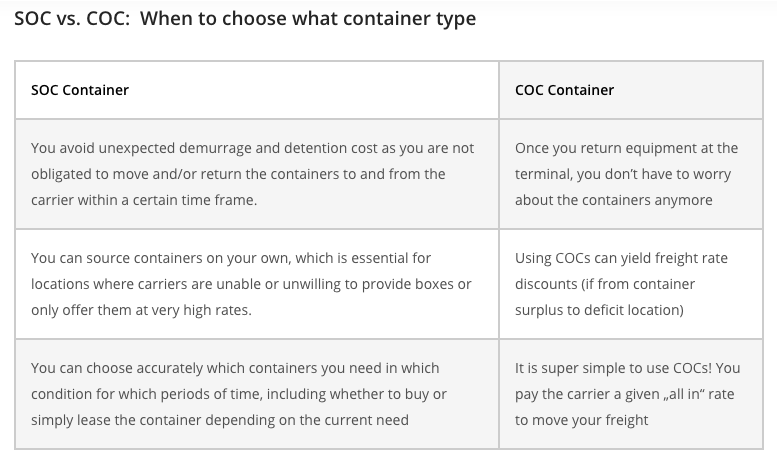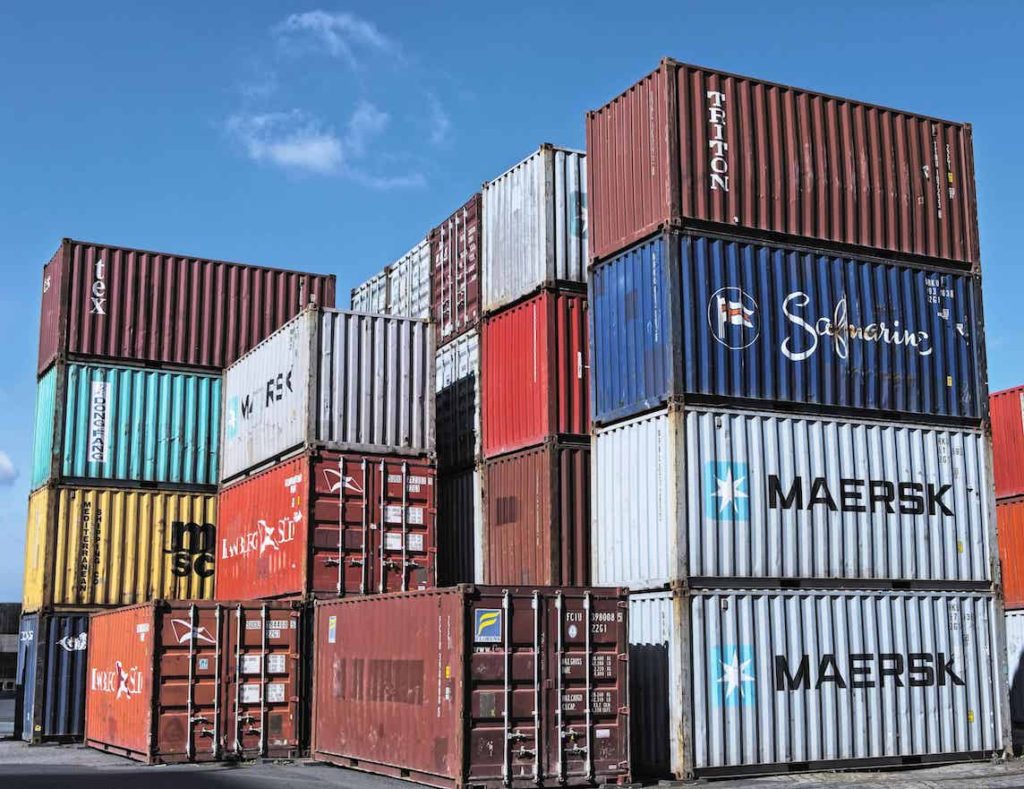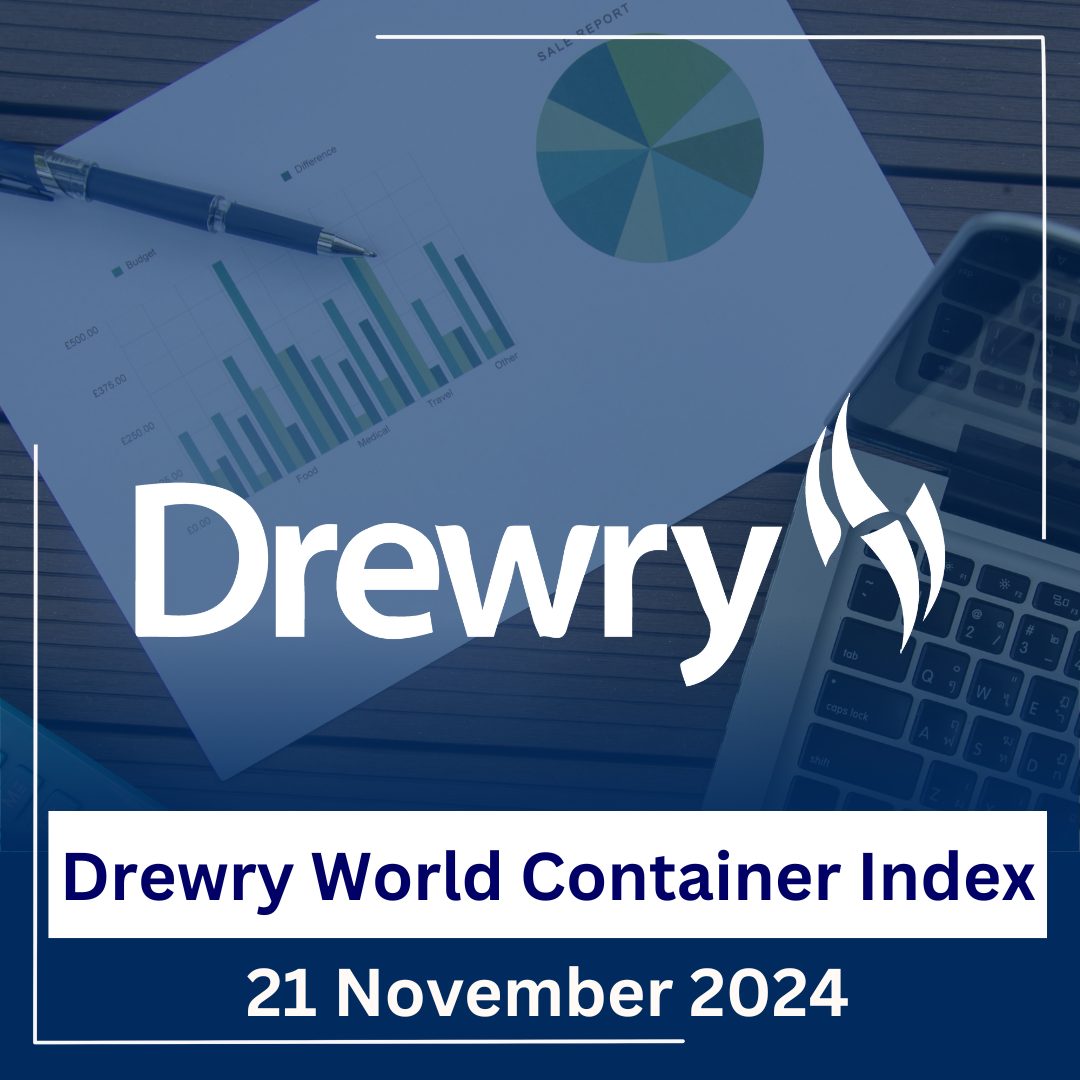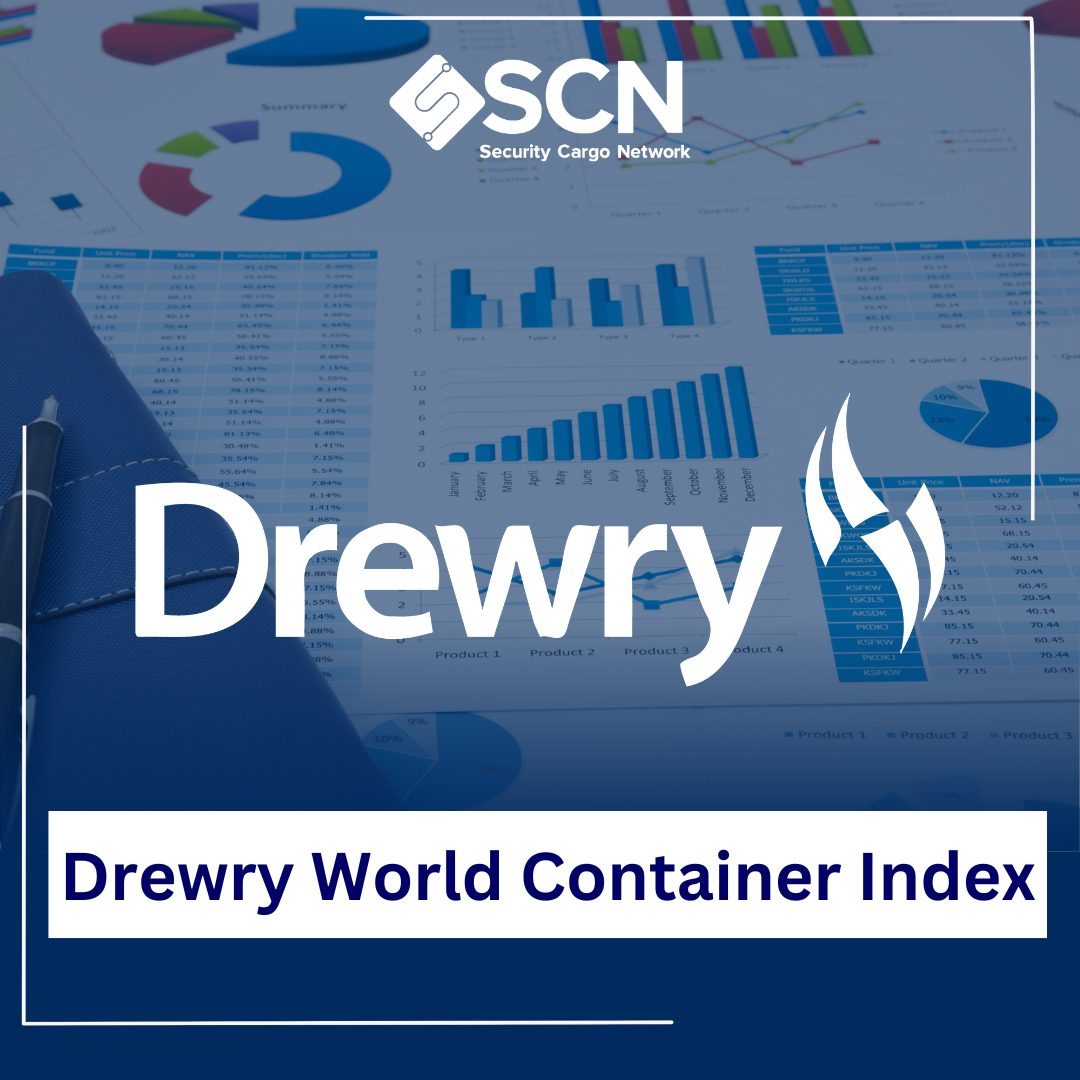
SOC Container and COC Containers – Which one would you choose?
Whats the difference between a SOC Container and COC Containers? We’ve been asked this question several times lately! Containers are important assets that have brought tremendous value to the shipping industry, invented by Malcom McLean. As an asset they go through several interactions between point of loading and point of destination, each of these adding complexity and cost to the transfer of goods. Ideally a shipper (let’s say that is you!) wants the right good moved to the right place at the right time, while keeping costs as low as possible. There are several choices and options you have for every individual transport need— but regardless of which move it is, there is the initial decision of SOC or COC.

What is a COC container?
Essentially a container is considered a “COC” when the carrier (container liner or steamship line) owns the container and controls the majority of the entire transport chain. COCs are normally used for standard shipments on stretches with a lot of cargo flow. There is little to no incentive for using your own container if the carrier has ample boxes available and you are paying a fair price for the end-to-end move.
Using a COC is simple: You pay the carrier a given “all in” rate to move your freight from A to B and the carrier is responsible to do the “in-between”. This includes the provision of the container itself. One resulting benefit is that once the move has been completed, the consignee does not need to worry about the container anymore. After the container is unstuffed, it is returned to the carrier’s depot and there are no further obligations to move or utilize it.
In cases where the shipment originates in a “high surplus” area—i.e. a region where trade imbalances resulted in an overstock of empty containers—using a COC can even yield significant freight rate discounts. This is true, because the shipper essentially helps the carrier evacuate some of the equipment by using it for export cargo.

SOC Container as an alternative
Problems arise when it comes to shipments that move away from the standard everyday transport of a carrier. This often leads to situations where the carrier prefers the shipper to “bring his own box”. In the case of our original example, this could mean changing the port of destination from Singapore to Karachi, a location with significant overstock and less sophisticated local processes. The simple and cost effective COC ex Hamburg suddenly gains in complexity which means costs rise exponentially. If the carrier has limited stock of containers in the port of departure or no need for additional units at the point of return (e.g. because in that specific location there are always more imports than exports or it is a remote hinterland location), naturally they will charge you a higher rate to cover their costs.
Main benefits of a SOC Container include:
⚡️Control of supply:
You can source containers on your own, which is essential for locations where carriers are unable or unwilling to provide boxes or only offer them at very high rates.
⚡️Control of ownership:
You can choose accurately which containers you need in which condition for which periods of time, including whether to buy or simply lease the container depending on the current need
⚡️Control of cost:
You avoid unexpected demurrage and detention cost as you are not obligated to move and/or return the containers to and from the carrier within a certain time frame. You have to take loading times, customs cleareance, drayage, port congestion etc. into account when planning you shipment. Demurrage & Detention charges can quickly escalate to hundreds of dollars per day.

Thanks to our SCN Partner, xChange, for giving us all that useful information. If you want to know more or need help, please contact:

Christian Roeloffs
+49 174 2174 526
cro@container-xchange.com




